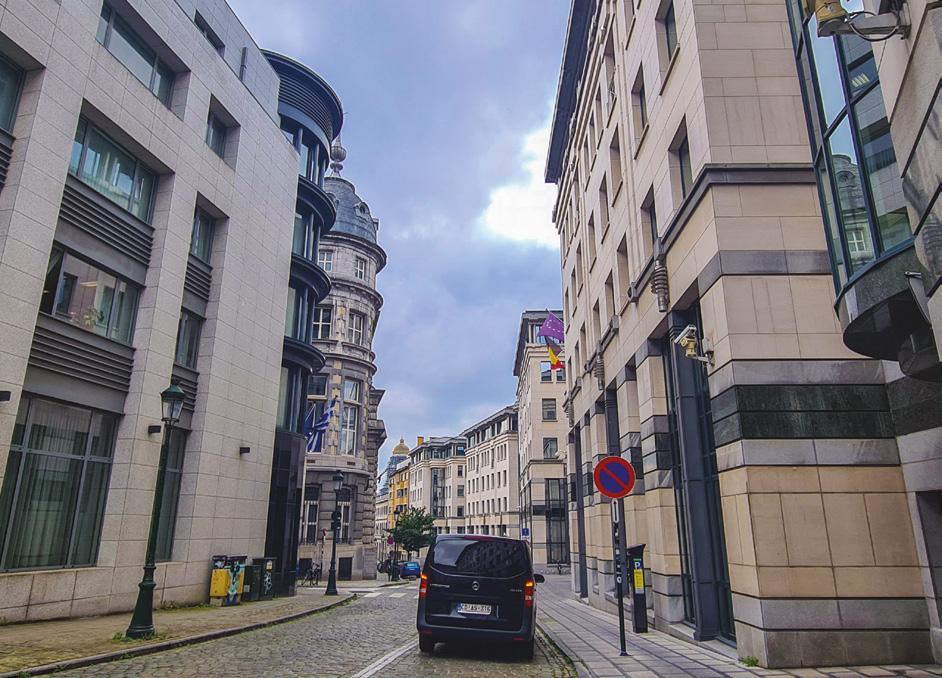
10 minute read
Accessible Brussels?

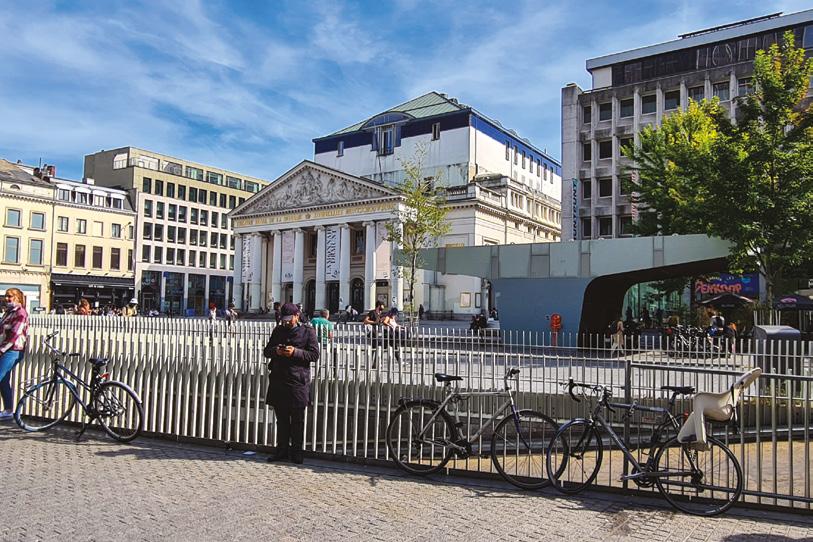
Brussels, home of the European Commission, many EU departments and a hub for Europe, has a history of formal recognition of fundamental human rights alongside an increasing awareness of the need for explicit inclusion of people with disabilities. Carole Edrich looks at how this pans out for tourists and visitors.
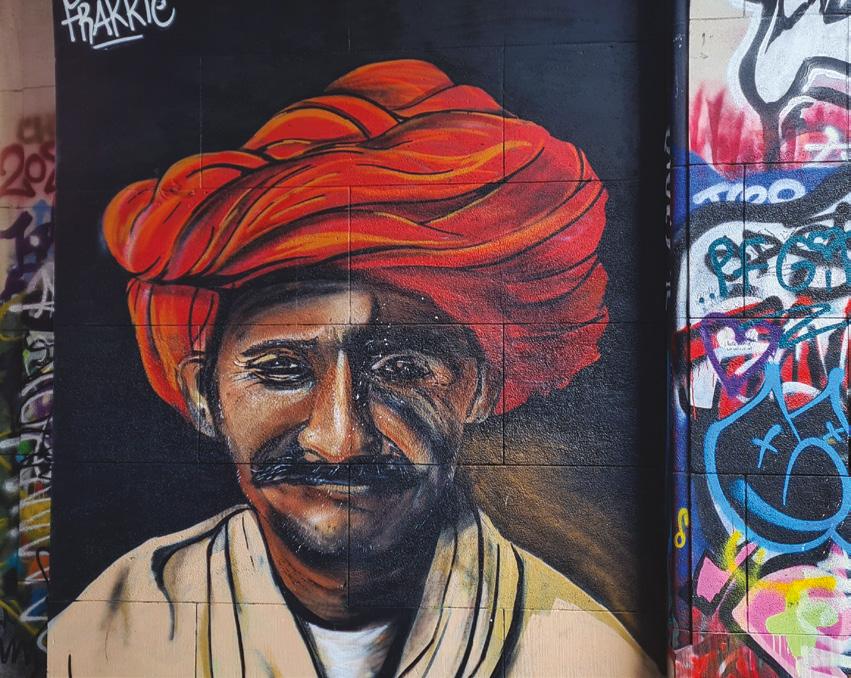

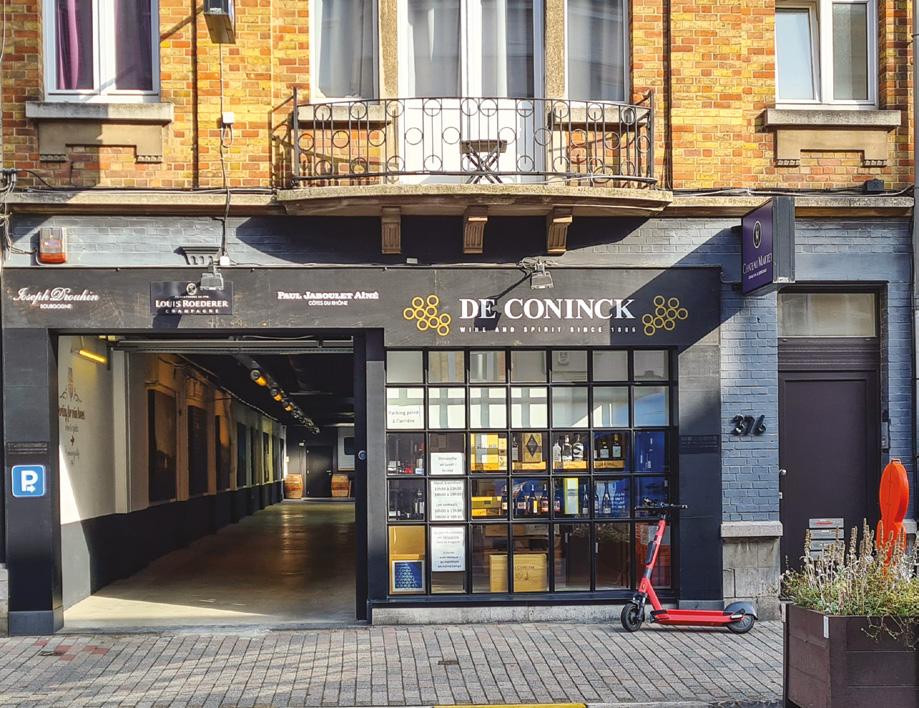
CaroleEdrichPhotography @ All images:
Arriving
The most likely point of disembarkation from the train is Garde du Midi/Zuid station (Midi for short). From here you can go on to France, Belgium, Germany, the Netherlands and back to the UK. The station is large, well laid out and fully wheelchair accessible. It has dedicated family restrooms or quiet rooms, but you will need to contact your rail provider in advance to request services for boarding and alighting, though I am not sure why, since they already know if you have a wheelchair or mobility-aid ticket from your booking.
Fares and Journey Planning
Buy a group of bus fares in advance at 2 euros per ride, or 2.50 on board. Because the fare box is at the front of the bus, drivers usually allow wheelchair users to ride free, although this is not official policy. Metro fares are never waived because stations have accessible fare gates and ticket machines.

Stop Announcements
All metro and buses that I’ve been on have written notifications of each stop and other announcements in both Dutch and French as you approach them. Since English is not an official language, the only English language announcements you’re likely to hear are in the airport and Midi.

While German is an official language in Belgium, the only place you are likely to hear it on public transport is the German provinces, where Belgium borders Germany and Luxembourg.
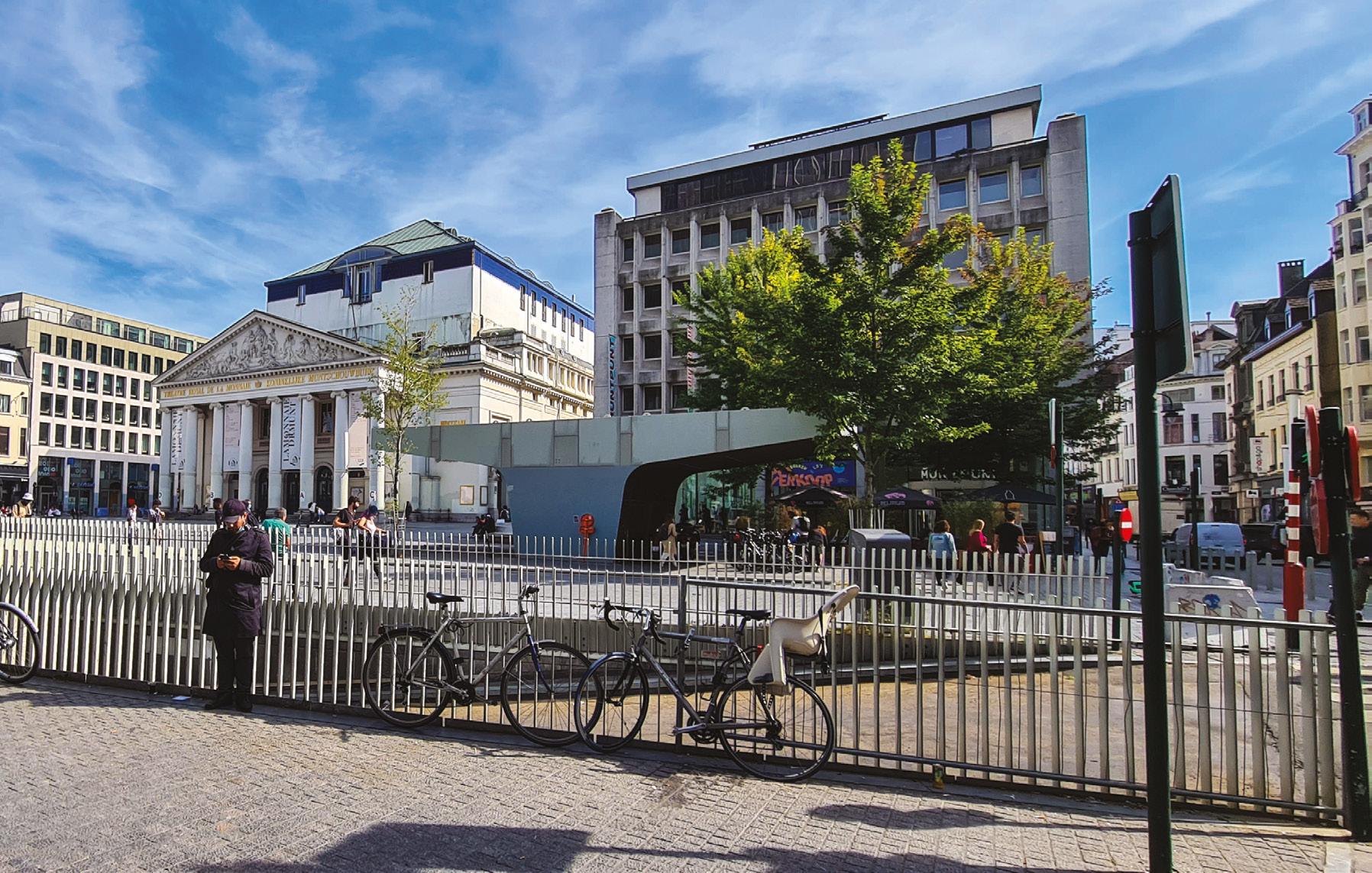
Metro
The Brussels Metro has four lines serving 59 stations. 49 of these have step free access between street and metro platform and about 27 have elevators. Passengers in wheelchairs or mobility aids should always board the first car, where the subway operator is located.
Sadly, it is not always possible to roll on or off the trains without assistance, particularly in central Brussels where there can be steps of up to 7 inches. Because this is difficult for a manual wheelchair and virtually impossible for powered wheelchairs, the city provides staff that must be requested, either by phone or with the request form. This is Belgium - not every station is staffed. It is best to be prepared for an hour-long wait and I’m not sure what happens for disembarking.
This is a bit of a pain, but as city buses don’t give easy or quick access to places like the Atomium and MiniEurope, wheelchair users don’t really have a choice.
Bus
You can get around Brussels with the 61 bus routes of which 11 operate through the night. Almost all buses have wheelchair ramps at the centre or rear door. They are hydraulic and electronic, deploy from below the door and are activated when you signal the bus driver. Sadly just one wheelchair space is available on each bus, and straps to secure the chair are often missing.
Other Needs and Public Transport
The Brussels based STIB network seems to concentrate on providing accessibility with visible disabilities and reduced mobility. Places with rail connections have waiting and family rooms that can serve as quiet places, and metro stations provide minimal but regularly spaced seating. Bus stops in most of central Brussels have seats, but this is not necessarily true elsewhere.
Pavement and Roads
The more modern the area, the more likely pavements will be flat and easy to navigate for wheelchair and mobility-aid access. Most traditional squares have shady trees or plantings, along with places to rest and chat, and the more modern ones have been replanned with grass as part of Brussels’ commitment to creating a greener environment. It’s just as well. Newer and renovated areas have pavement ramps, level ground and nice wide promenades or walkways, but historic Central Brussels has a multiplicity of sidewalk and road surfaces. I have seen people take their motorised wheelchairs on the busy roads rather than try to navigate the pavements.
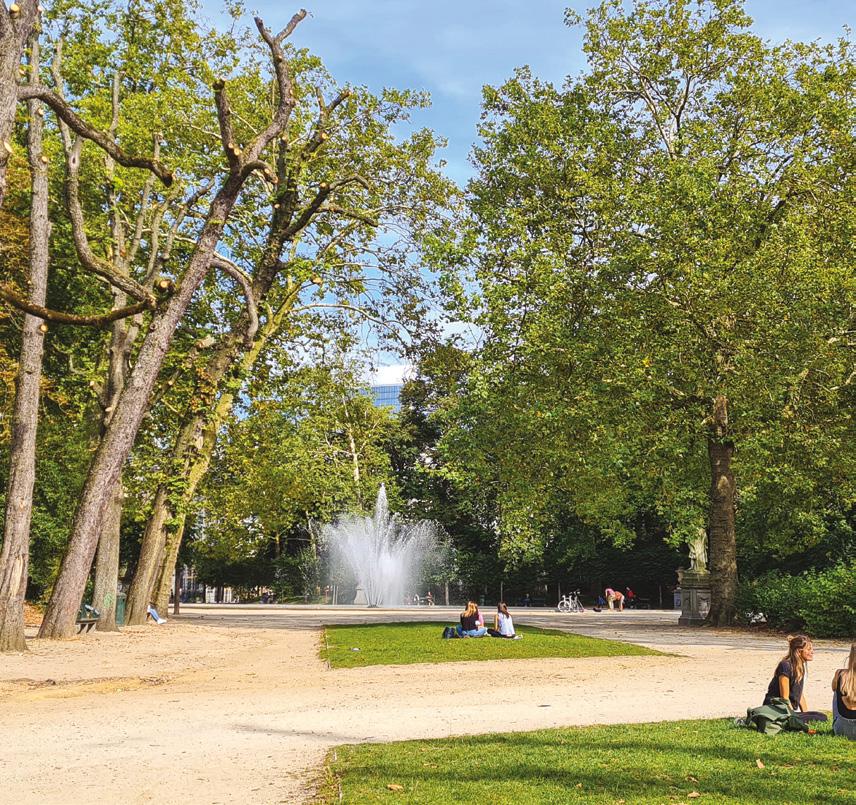
Taxis
10% of taxis in Brussels are wheelchair-accessible from the back, and if the user can collapse their wheelchair, Taxis Verts can provide rides. All taxis have specified charges, so there’s no need to worry about being ripped off.

Finding accessible places of interest
Covid
Unlike London it is my experience that people on public transport in Brussels obey any mask-wearing advice that is in play. In times of high risk, high-population areas like shopping streets also have maskwearing rules in force. Most areas obey such directives, although I have found exceptions to this in the roads around Midi and Gare du Nord (Station Noord).
Assistance and Guide Dogs
After living in Brussels and walking everywhere when fit enough, I have seen just two people with assistance or guide dogs. Even given that I might however not recognise assistance dogs for people who are not sight-impaired, which in itself says something (though whether as a social comment or my powers of observation I’m not sure). Nonetheless, a law passed in 2007 that considers the assistance dog as an indispensable aid, and states that assistance dogs must be accepted in any public place, including bars and restaurants.
Handy.brussels
This is a website and app specifically created to help people with reduced mobility get around Brussels. It is in English, French and Dutch and is updated sporadically but regularly. It includes pieces on where to find an accessible toilet, fleeing Ukraine with a (visible) disability, routes, places accessible for people with mental, mobility, sight and hearing impairments either alphabetically or per commune (mostly autonomous city area).
Accessibility Brochure
Free to download, these sites are broken down into ‘accessible for those with reduced mobility’ and ‘moderately accessible’ meaning accessible with the assistance of another person. It includes 100 museums, handy information about tickets (British people who are not resident in Europe are not eligible for the disability card, so don’t waste your time researching it) and information about the accessibility or otherwise of other cultural institutions and interesting locations.
A Resident’s Perspective

Brussels is a challenge for me, as a Londoner. It is hard to make comparisons with this capital city (with its 2,110,000 inhabitants in 19 mostly autonomous communes) with that of London (with its 9,541,000 inhabitants in 32 not-particularly autonomous boroughs). It is difficult to understand how the capital city of a country with 5 governments (Dutch, French, German, English and the overall one) works. I am not sure whether comparing the way the arts sector in London works with and behaves towards diversity and inclusion is appropriate. Putting aside such reservations, living in Brussels is a challenge, a rewarding experience and provides me with exciting potentials.
It is also confusing. Brussels is an exciting and mostly accessible mashup of ideas, approaches, and perspectives. 70% of Brussels’ inhabitants are of foreign origin (37% in London), about 32% of whom are European and 36% from other backgrounds. The cafés and coffee shops mix everyone and are cheerful. And while nothing seems to work to plan, things pan out well in the end.
To get a real insight into the local psyche, visit the Magritte Museum. Look at Golconda and The Son of Man. Marvel at his bowler hats, surreal juxtapositions, and his cloudy dreamscapes. Take in his Treasury of Images. This work raised deep political questions, showed the conflicts in his culture and its ideals. It questioned appropriation in ways that are more appropriate now than ever. More than that, even now, they are marvellously, amazingly, quintessentially Brussels. My gift to you, it took me two whole years to work that out.
AUTHOR: Carole Edrich, photographer and journalist,and board member for Unlimited FACEBOOK:
CaroleEdrichPhotography
LEARNED NONUSE: ADDRESSING THE OBSTACLE TO REHAB
Stroke survivor and GripAble ambassador Kate Allatt describes the phenomenon of learned non-use and highlights the importance of raising awareness to prevent the issue, to ensure better rehab outcomes for survivors of stroke, brain injury or other neurological conditions.
Getting back to carrying out everyday activities independently after a stroke or brain injury is a huge victory for survivors, and certainly no mean feat.
Regaining the ability to do small tasks like chopping up vegetables and brushing your hair goes a long way towards rebuilding confidence. But it can be all too easy to lead and overcompensate with the stronger hand or side of the body. This is known as ‘learned non-use’.
What is learned non-use?
Learned non-use results from neglect of affected limbs and can happen to anyone who has suffered an injury which impairs their movement. For example, it can happen when an arm is immobilised in a cast for a period of time or following a brain injury where a person is affected by hemiplegia.
Learned non-use occurs when this neglect becomes severe, and the brain completely forgets how to use the affected hand or limb. This can also lead to muscle wastage.
Learned non-use is not necessarily permanent and can be treated via constraint induced movement therapy (CIMT), which is based on the theory that the affected limb may have a potential but unrealised ability to move due to reliance on the unaffected limb.
Effort and commitment are required to prevent learned non-use, even if it’s just a little, every single day.
The effects of learned non-use on both mental health and motivation can be profound, but with expert support from an occupational therapist, treatment is possible, and this begins with raising awareness and opening a dialogue around what learned non-use is and the effects it can have.
How can occupational therapists address learned non-use in patients?

Occupational therapist and neurorehabilitation specialist at GripAble, Lauren Edwards, has experience with tackling learned non-use in her clients undergoing neuro rehab. Speaking about treating the issue, she said: “Constraint induced movement therapy (CIMT) can benefit those experiencing learned non-use. It is generally agreed that CIMT works best when there is a baseline level of movement present. Those with less movement are advised to explore alternative treatments first but should always seek guidance from their therapist on what will work best for their individual circumstances. “Studies have shown that six hours a day of CIMT contributes towards recovery of movement in the affected hand, however changes can be seen with just three hours per day.” “It is important that a variety of tasks and activities are used to challenge and stimulate movement in the affected arm,” Lauren explained. “GripAble is a great tool to use at home Kate Allatt for those undertaking a CIMT program. The games encourage wrist and hand movements and can be calibrated to the subtlest range of movement. Gaming can induce a sense of flow which can make those three hours pass by a lot more quickly!”
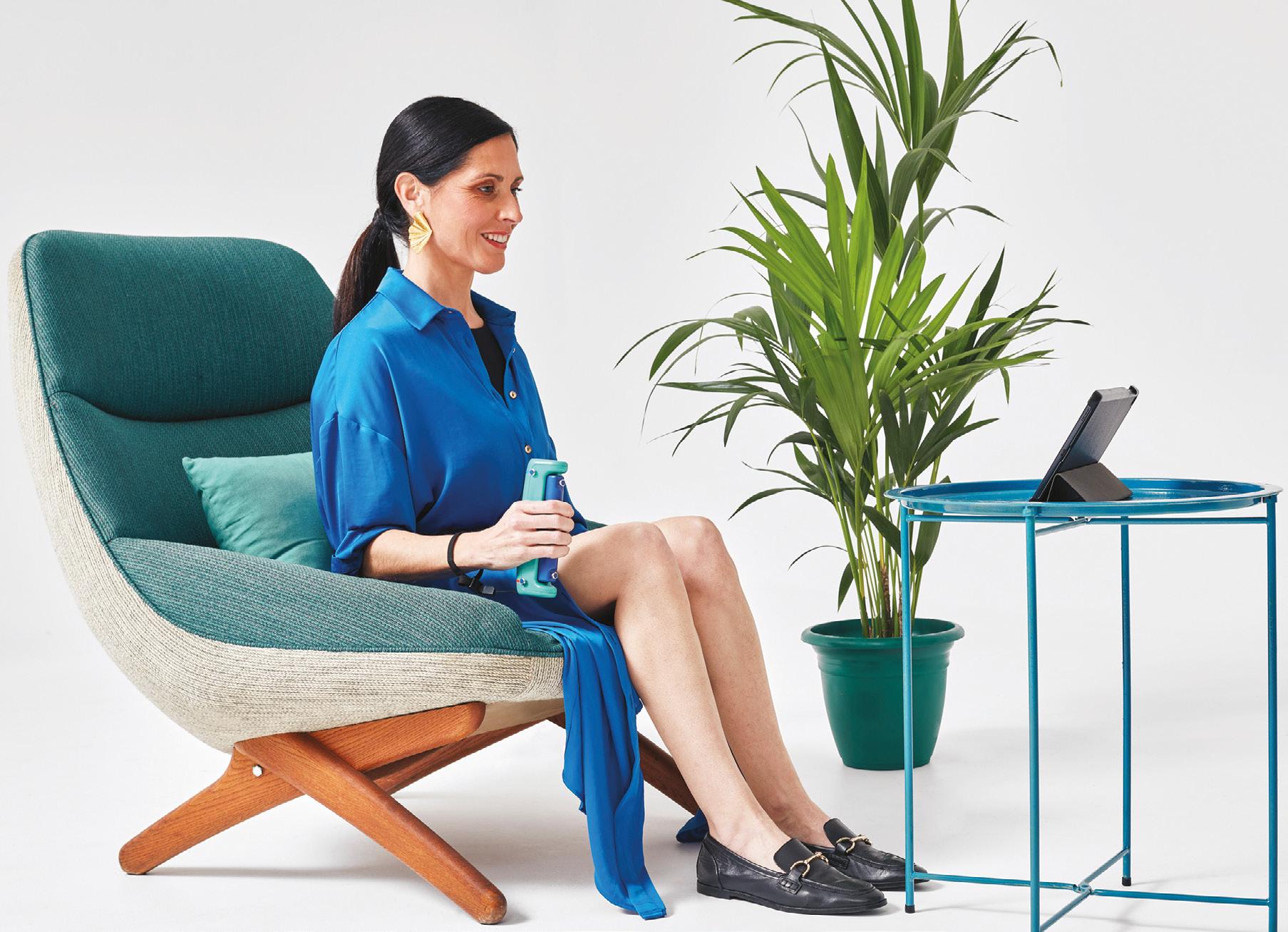
iFor more information, you can visit our website at Gripable.co. or email on hello@gripable.co. Alternatively, you can call us on 0207 661 4018.










